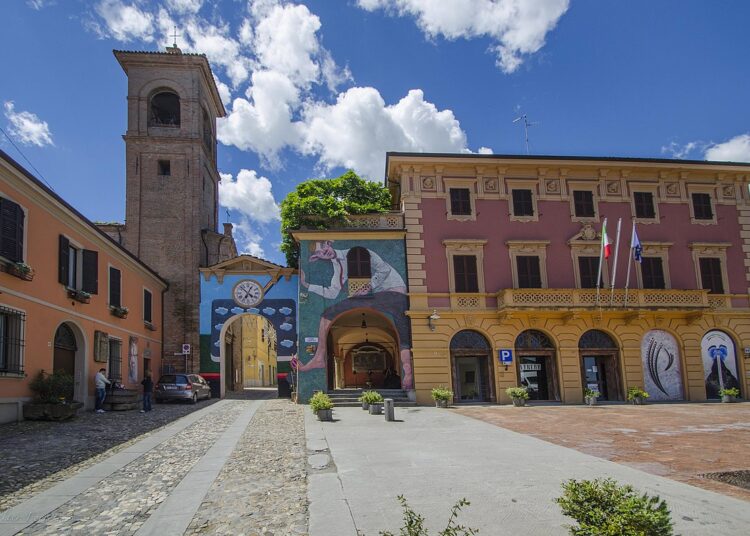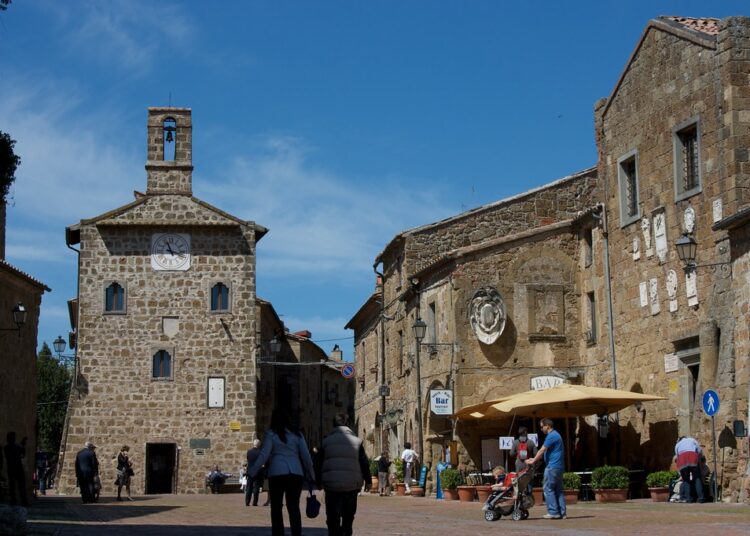Dozza, Emilia Romagna

Just south of Bologna, the capital of Italy’s Emilia Romagna region, lies a dreamy medieval village called Dozza. It’s one of the “Borghi piu belli d’Italia”, an association of the best-preserved and most beautiful Italian villages, yet it’s totally off the radar for most travelers. But it’s without a doubt a hidden gem!
Located around 45 minutes from Bologna, Dozza is a 12th-century medieval village, well-known locally for its art-filled walls. There is a painted wall festival that takes place every two years where artists assemble to create new permanent murals on the walls here.
Wine lovers should take note of Dozza as well. This is also a prominent wine region and the Rocca Sforzesca is more than the historic medieval fortress. Today, it’s the Regional Winery that houses more than 1,000 labels from all over Emilia Romagna.
Dozza is a pocket-sized town with lots of character, as it truly feels like an image plucked from the pages of a fairytale. There’s not a whole lot to do here, as it only takes 5-10 minutes to walk from one end of the walled town to the other, but it’s the perfect place to spend a day or afternoon exploring its charming streets on a day trip from the busy and cosmopolitan Bologna.
While the painted walls of Dozza are the town’s main attraction, the Rocca Sforzesca di Dozza, its medieval fortress, is absolutely worth a visit. The imposing burnt-orange fortress walls have stood here since the 13th century, protecting the town and surrounding areas through centuries of war.
If you’d like to spend a night here, you should check out the Hotel Restaurant Canè, which was established in 1928. It was recently renovated and open all year round.
For a leisurely lunch (pranzo) and to sample the local wines, you can visit the on site restaurant that has two dining rooms and a terrace and offers the typical cuisine of the Emilia-Romagna region.
Sovana, Tuscany

Sovana lies just a few kilometers from Pitigliano, at the southern end of Tuscany. It’s a diminutive Tuscan jewel with only a single street and a tiny piazza. Don’t let its tiny size deter you, though, this sleepy little village is worth a day trip. It doesn’t take long to see the town, but it leaves a lasting impression nonetheless. It’s one of the tufa towns and highlights of the Maremma.
A visit here means walking along the main street, via del Pretorio, that runs from the ruins of the fortress built by the Aldobrandeschi family, the Rocca Aldobrandesca, to the Cathedral. The street leads to the town’s central square Piazza del Pretorio. The square is a delightful example of Medieval architecture: notice the 12th century Palazzo dell’Archivio with its facade adorned by a clock, and the Palazzo Pretorio with its many coats of arms,
The charming small Church of Santa Maria is worth a visit. Once inside the Romanesque church, look out for the 9th century ciborium (a large canopy over the altar, which was a common feature of Early Medieval church architecture). It stands in place of the altar, and it’s one of the oldest of its kind in Tuscany. The frescoes of the late 15th century Sienese School decorate the chapel in front of the entrance.
At the other end of the town you’ll find the Sovana Cathedral, one of the best Romanesque churches in Tuscany. It’s built on a pre-existent church (9th century) of which only the crypt remains today.

The church and its architectural details are is well worth exploring. While the original facade has been buried in the adjacent building, there’re still some interesting feature. The crypt, the baptismal font (1434) and the white marble decorations on the tufa building are of particular interest.
For accommodations, the Sovana Hotel and Resort is an old country house, completely restored and surrounded by olive trees and gardens located in the countryside and facing the S. Pietro e Paolo Cathedral in the Sovana village.
As for dining, there are multiple options around the central area of the village. You will find La Taverna Etrusca on Via del Pretorio and eehGiá bistro on Via del Duomo.











